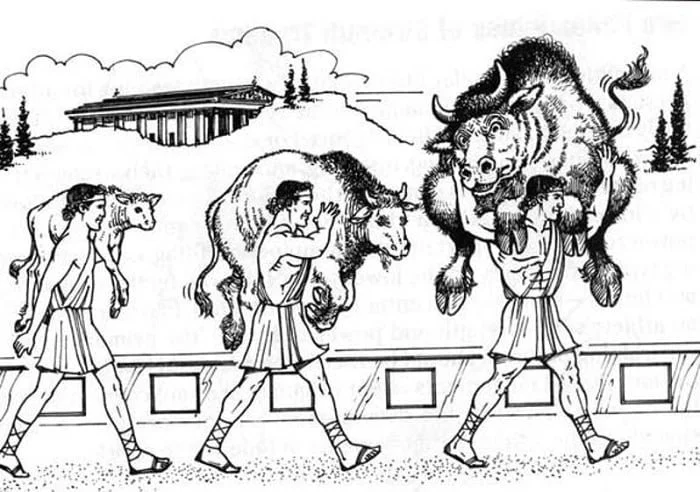Do less to achieve more.
How consistency and progressive overload can help you build strength and improve your fitness.
If you want to get stronger and build muscle, you have to constantly challenge your body, but in the right way. Simply adding more weight or doing more reps (or repetitions) isn’t going to necessarily help you achieve your goal. At a certain point, adding too much can lead to injury or overtraining. Instead, you need consistent and incremental or “progressive” challenges. Today, we’ll talk about one of the most fundamental principles of strength training, called progressive overload, and strength coach Dan Cleather’s “cardinal rule of training," which is consistency.
Progressive overload can best be summed up with the story of Olympic wrestling champion Milo of Croton in 540 BC. Milo carried a baby bull calf on his shoulders every day for four years. As the calf grew into a full-grown bull, Milo became stronger as he adapted to the weight of the bull each day.
The key to progressive overload is that it needs to be incremental. As this story shows, the progression needs to be slow and manageable yet challenging enough to stimulate growth. Although lifting more weight is one option, it isn’t the only way to progress and get stronger. There are several other ways to build strength, and you’ll need to try different approaches the longer you train.
In addition to using progressive overload, you need to be consistent in how you implement these changes. Coach Dan Cleather calls this idea the cardinal rule of training. He says, “If you want to be good at something, you need to practice -- a lot. ...if you want to be good at something, above all else, you must be consistent.” In other words, you need to practice regularly.
While building a habit (and sticking to it) is a topic for another post, we’ll focus here on how to implement progressive overload into your current training program. Here are five ways to increase your strength and build muscle without breaking the cardinal rule:
Increasing the weight or load (when you’re ready to do so) is important because you’ll eventually plateau if you always use the same weight. When you’re new to training, you may be able to consistently add more load to certain movements. This is part of what makes training exciting and fun when you first start. Eventually, this progress slows down, and your coach will use other tactics in your program to continue progressing your workouts.
Increasing your training volume is another way to stimulate muscle growth. You can increase volume by either adding more reps or sets. Increasing training volume is especially useful for upper body movements since progressing the load on these exercises is often harder. Adding volume is also useful for training around injuries since you want to be conservative when adding more external load to injured tissues.
Adding a tempo is useful for building foundational and connective tissue strength. Before you add more weight, you need to make sure your tissues are prepared to handle it. Tempo training allows you to focus on stability, maintaining tension, and ensuring you’re able to control the weight before you add more. If you skip ahead too quickly, you may end up with an injury like tendonitis, which is frustrating to work around and takes time to recover from.
Trying another variation of the same movement pattern is another option. If you’ve been squatting the 16-kilo kettlebell for some time now but feel that you can’t get comfortable with the weight or like it never gets any easier, we can focus on a different exercise based on the same type of movement or movement pattern.
Cleaning up your technique is one of the best yet most overlooked ways to build strength. Oftentimes, we add more load before we’re ready to, which makes us rely on momentum and compensations from other muscle groups to move the weight. Instead of grabbing the next weight up, try paying more attention to what’s happening in your body during the movement and moving a bit slower (or adding a tempo!).
The main points to remember are that you can’t just rely on one technique to help improve your strength and fitness and that progress isn’t linear. Changes in our bodies are often slow and unnoticeable until, one day, they’re right in front of us.
The biggest mistake most people make when starting any new habit is that they stop before they can see a change occur. They break their habit and are no longer consistent. Sustainable habits are slow-growing and require constant input. If you’re trying to get stronger and feel better, try doing less but more often. Making small, incremental changes (like progressive overload) leads to growth, but when you’re feeling stuck and frustrated, remember—growth requires patience!


